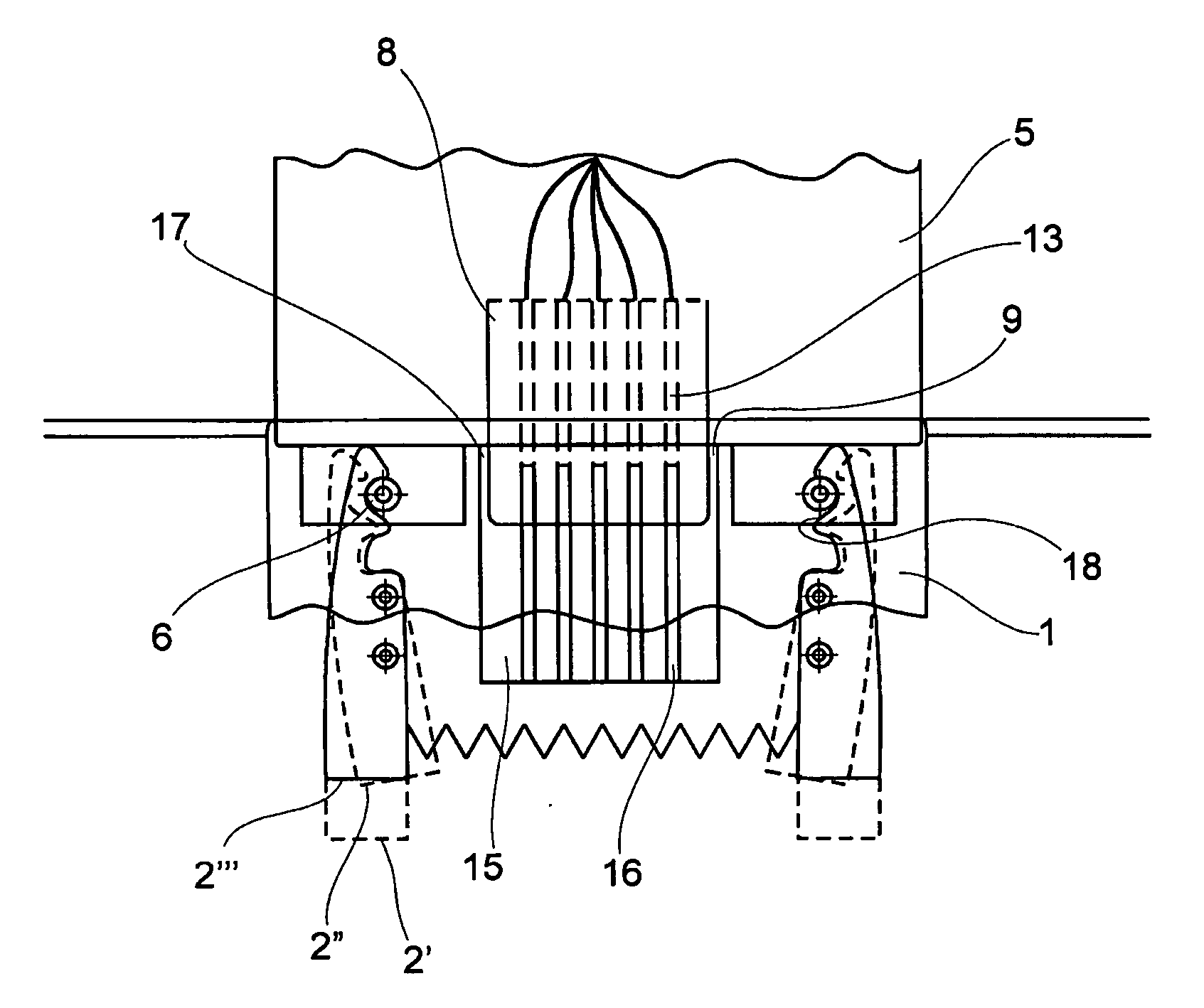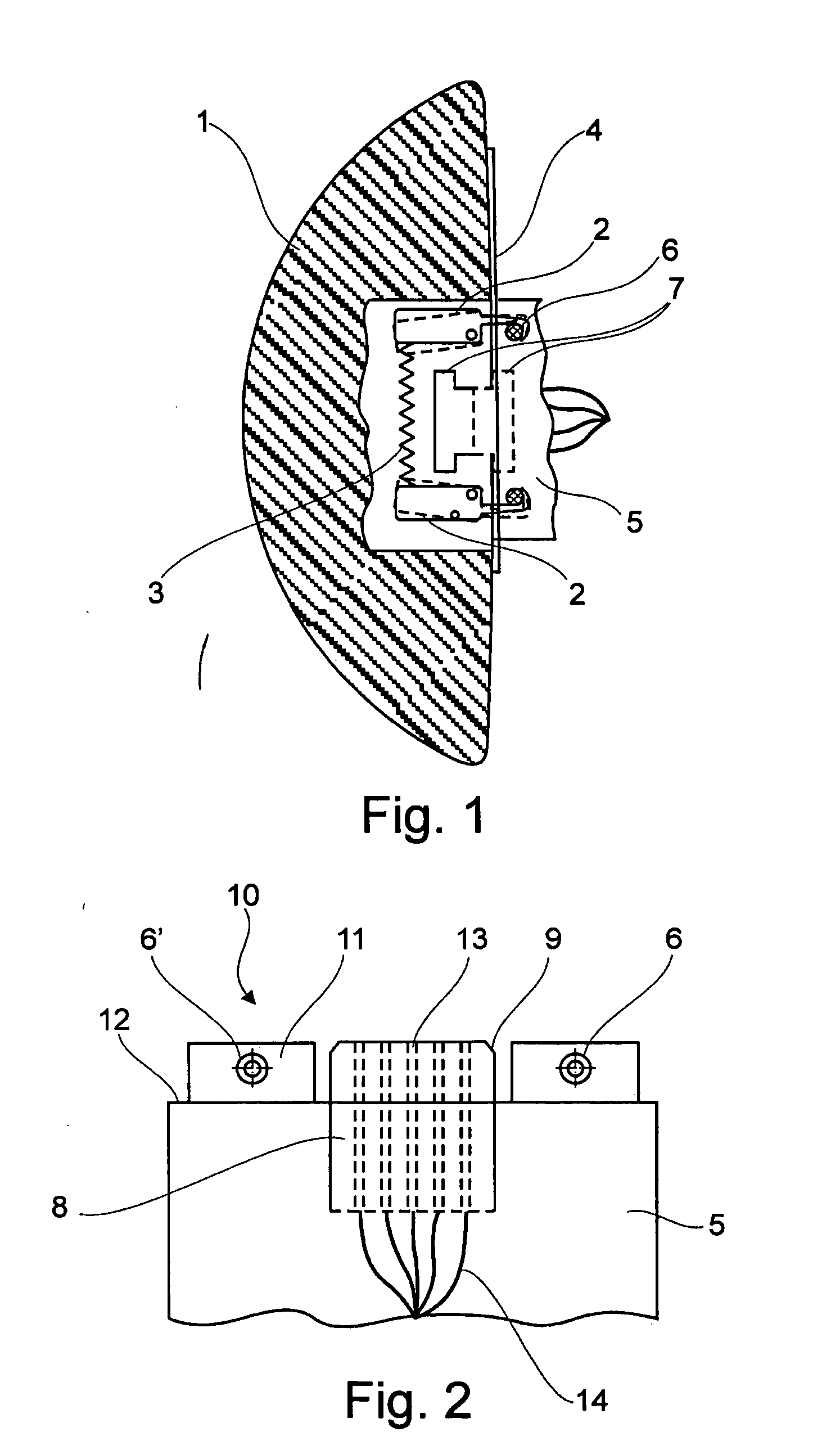Attachment system for an electrical device for installation in aircraft cabins
- Summary
- Abstract
- Description
- Claims
- Application Information
AI Technical Summary
Benefits of technology
Problems solved by technology
Method used
Image
Examples
Embodiment Construction
[0037]FIG. 1. The interior of a dome-shaped housing 1 of an exit sign comprises swivellable claws 2 which can be deflected against the restoring force of a stretched spring 3. At its margin a base component 5, installed to the cabin wall 4 so as to be fixed, comprises stud bolts 6, which are gripped from the back by the swivellable claws 2. In the centre region there is an interconnected pair of complementary connector units 7, which ensures the electrical connection between the base component and the housing component.
[0038]FIG. 2 shows a lateral view of a section of a base component 5 according to the invention, with a multi-pole supply connector unit 8, prepared for connection to various electrical supply lines, as a base, with a phase 9 to facilitate installation. The supply connector unit 8 is a ten-pole design. Nine poles are assigned. On the side of the supply connector unit 8 stud bolts 6 are connected to the base component 5, wherein the axes of said stud bolts 6 extend so...
PUM
 Login to View More
Login to View More Abstract
Description
Claims
Application Information
 Login to View More
Login to View More - R&D
- Intellectual Property
- Life Sciences
- Materials
- Tech Scout
- Unparalleled Data Quality
- Higher Quality Content
- 60% Fewer Hallucinations
Browse by: Latest US Patents, China's latest patents, Technical Efficacy Thesaurus, Application Domain, Technology Topic, Popular Technical Reports.
© 2025 PatSnap. All rights reserved.Legal|Privacy policy|Modern Slavery Act Transparency Statement|Sitemap|About US| Contact US: help@patsnap.com



